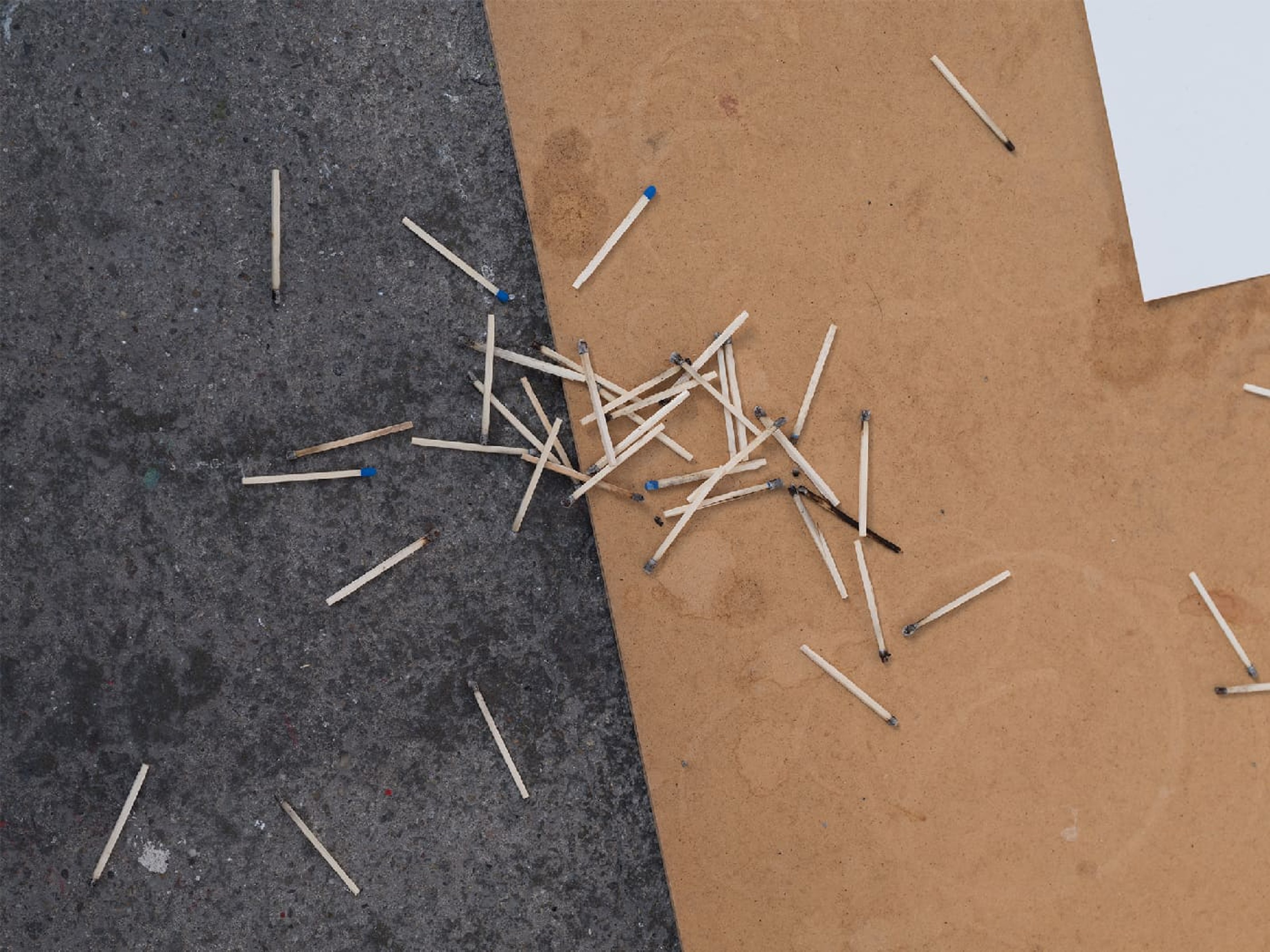Thomas Wachholz’s works include fire and light, chemical reactions and stimulations of the senses. They generate a space where trivial activities manifest themselves as engaging gestures, interacting with the viewers while leaving traces behind. The installations question the authorship of these very activities, trigger dilemmas and allow for notions of exhibiting to exist differently.
In our conversation, Thomas Wachholz talks about what it takes to create a holistic experience for the viewer through their very own engagement. He talks about his desire to generate a temporality of togetherness, a haptic ekphrasis of losing control and continuity through his installations. In his work Alkoholarbeiten, he aims to challenge the notion of vision, going beyond its normalized definition through optical unclarity; whereas in Streichholzarbeiten, the work operates as an invitation where the viewers are asked to strike matches themselves. His practice aims to trace the poetics of the remnants; potentially it could be described as a social study, the results of it will never be predetermined.
In one of my last questions I asked the former master student of Professor Katharina Grosse at Kunstakademie Düsseldorf, Wachholz to tell me a story about love. He said that love is all about repetition and routine, about sensitive actions that open up a space of interactions. Yet for him, love is also an act of confrontation, a decision about letting go of things.
Thomas Wachholz and his studio were captured by the Cologne-based master photographer Albrecht Fuchs.

Ioanna Gerakidi: I’ve been looking at the etymologies of some of the chemical elements that your works consist of. Phosphorus, etymologically derives from the ancient words φῶς (fos) + φέρω (fero) and means the one that carries or the one that holds the light; and ethanol, comes from the ancient greek verb αίθω, which means to burn. In that sense, there is something primitive in your practice, as it holds light and fire as core components. Is that an ambience you are aiming for?
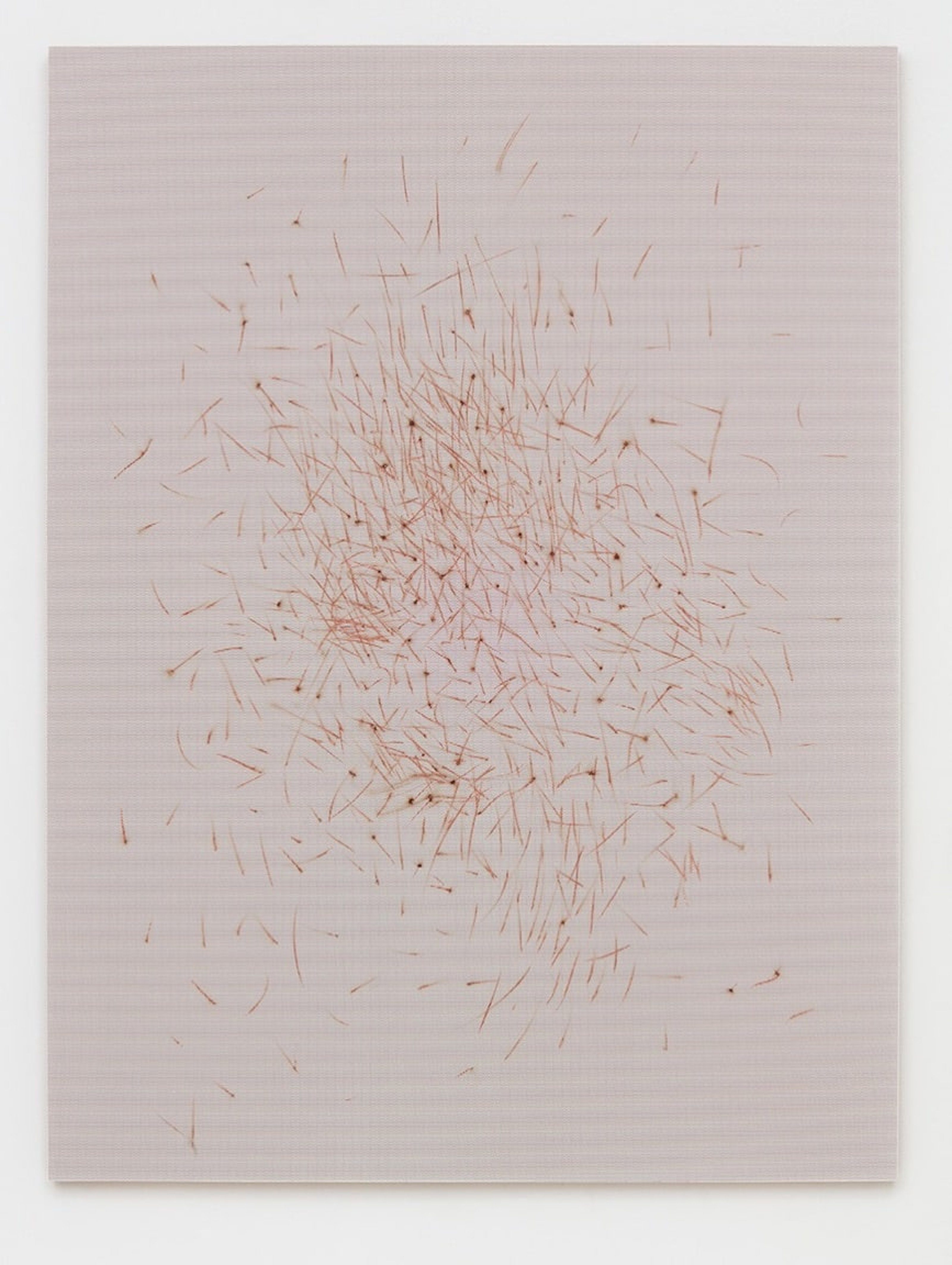
Thomas Wachholz Untitled (Reibfläche), 2016 (red phosphorous, binder on paper). Image courtesy of the artist and Nino Mier Gallery
Thomas Wachholz: No, not directly. I am really interested in these materials in my artistic work; I, myself, am also questioning why. Maybe, I am kind of an alchemist. Usually I choose materials according to their function or purpose in terms of industrial products or daily routines. But to combine materials that have a very direct effect on each other and derive from a cause and effect schema is appealing to me.
Fire and alcohol are associated with destructive and ultimate actions, they show a powerful chemical reaction that is easily visible. Yet in my works, they have an effect on the viewer that is more than just the obvious combination of materials, since I am always interested in how human beings interact with material and how they bring another dimension into industrialized perfect surfaces. Like that of phosphorous on a match box. As soon as you light a match, the action of your hand leaves a permanent and irreversible trace. This is an action of a daily and trivial routine that might be running in your body like a program. But in another context, what becomes apparent is how much instability and creativity may lie in these kinds of human interactions with things and materials. So the elements of this action might seem simple and obvious. Yet the interaction itself and its outcome is much more complex.
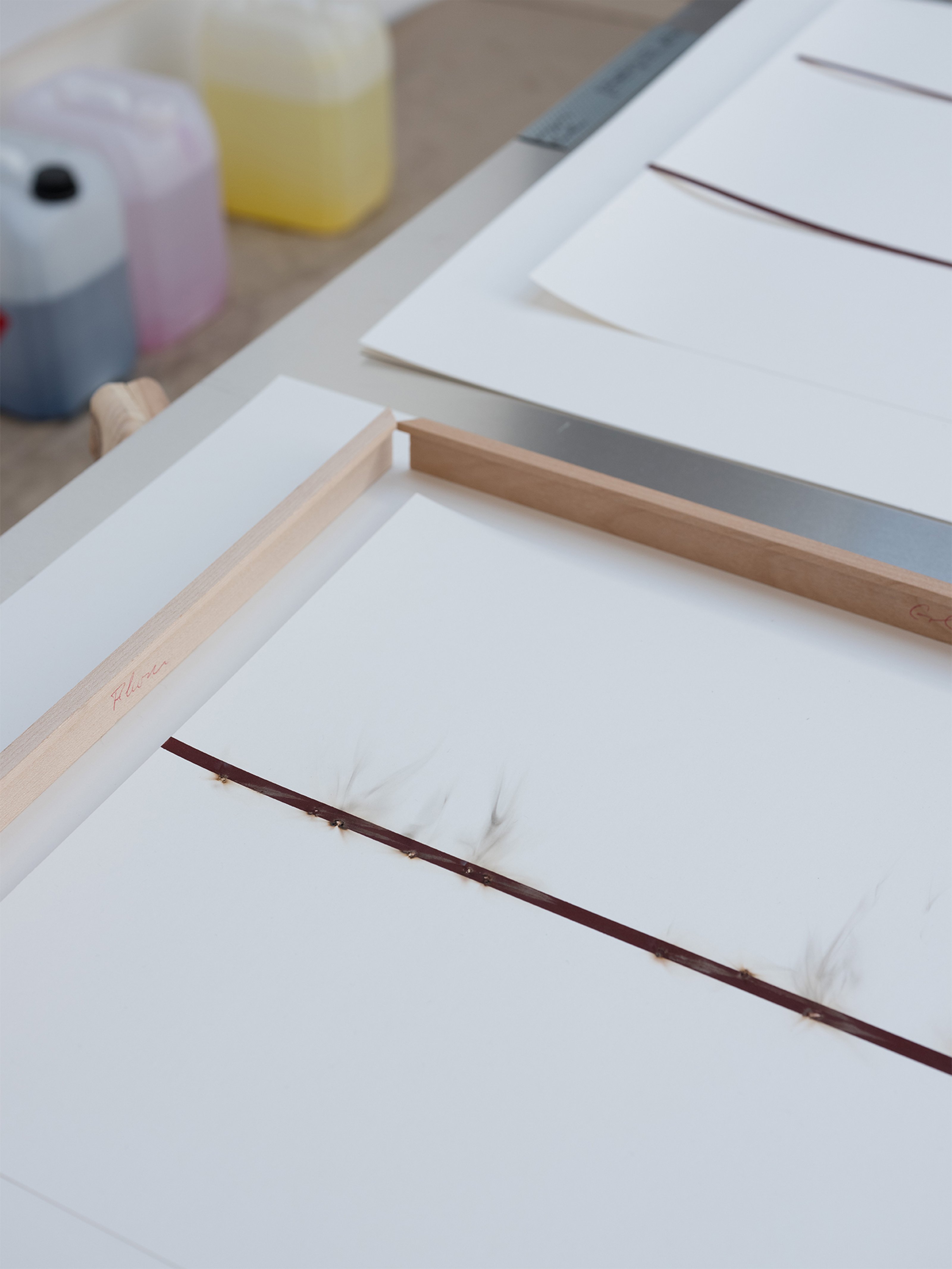
Wachholz’s Capsule Edition for Collecteurs. Photography © Albrecht Fuchs for Collecteurs
IG: Your work and its dynamics that create or recreate space, allow for multiple arousals of the senses. Especially smell; it’s directly associated with memory, with past and future mnemonic representations. How do you approach this hapticality and intimacy that are potentially generated?
TW:
In my matchstick installations, like Strike Gently at Nino Mier Gallery (2016), the act of lighting a match is important since its sulphuric smell through the chemical reaction of phosphorus and fire is mostly associated with memories. So there is something that visitors can relate to; something that I can combine with other media in the exhibition in order to create an experience as a whole.
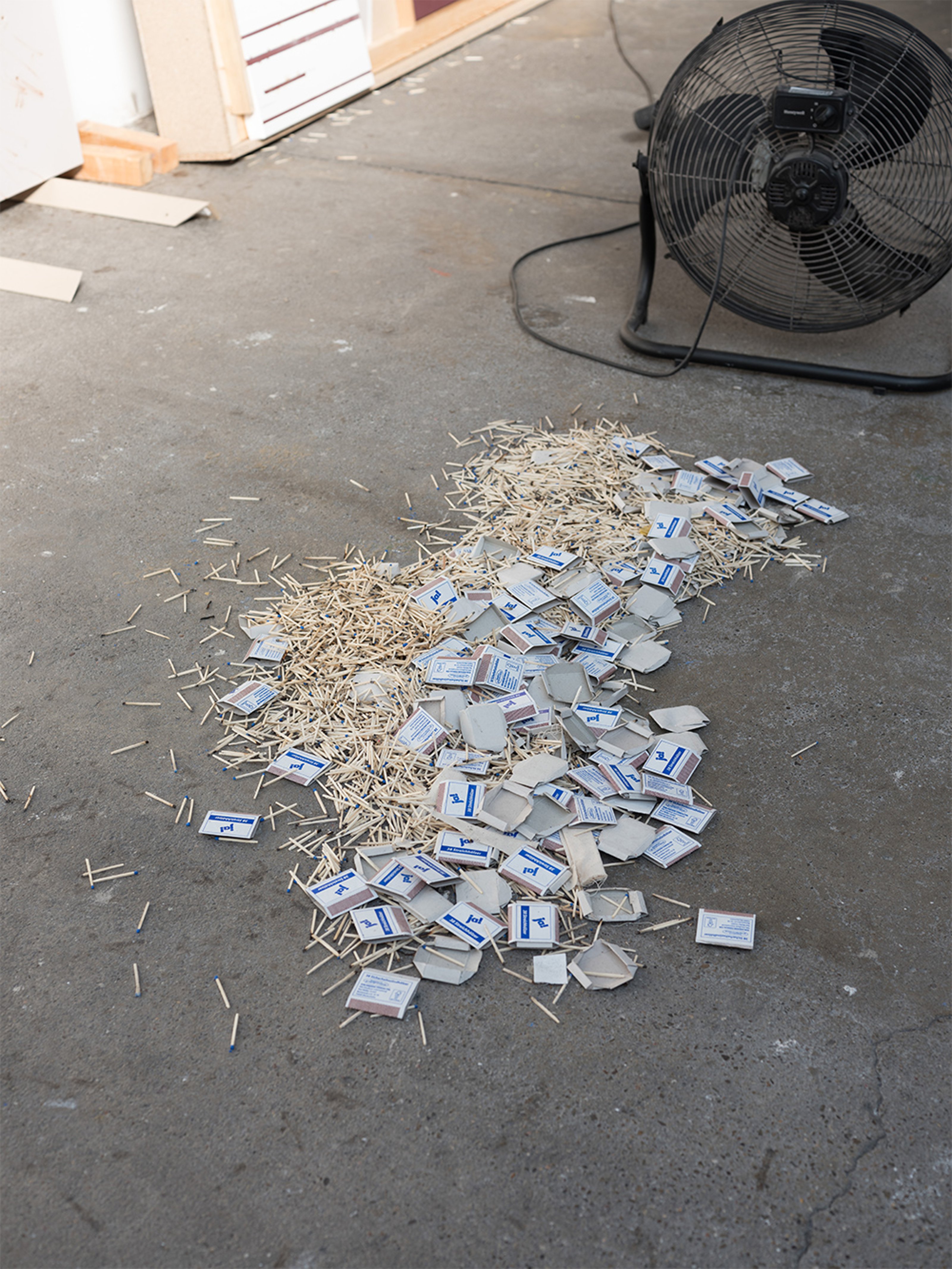
Thomas Wachholz’s studio, Cologne. © Albrecht Fuchs for Collecteurs
IG: In your website there is a short text that introduces the audience to the white out phenomenon. Can you tell us a bit more about this text and the work in general?
TW: This text was written by a friend of mine. We were talking a lot about the white out while I was preparing the exhibition. As you can see while reading the text, I’m fascinated by instructions. Especially in terms of safety instructions. Obviously, a white out is a serious situation for which you might need safety instructions. A white out is a weather condition that creates a very strange phenomenon of visual perception, since you are incapable of distinguishing optical differences. It usually happens when you are completely surrounded by snow and fog. You cannot see anything, since you cannot see differences. You cannot see the horizon. Perhaps you cannot even see your hand. It’s a situation of feeling completely unsafe and insecure. My series Alkoholarbeiten creates this visual effect; your eyes get insecure about the depth of the work, about its density and its feels like you are looking into a void. In the exhibition, I combined the work STANGEN with Alkoholarbeiten, as they both allow a feeling of being lost in this situation of a whiteout.
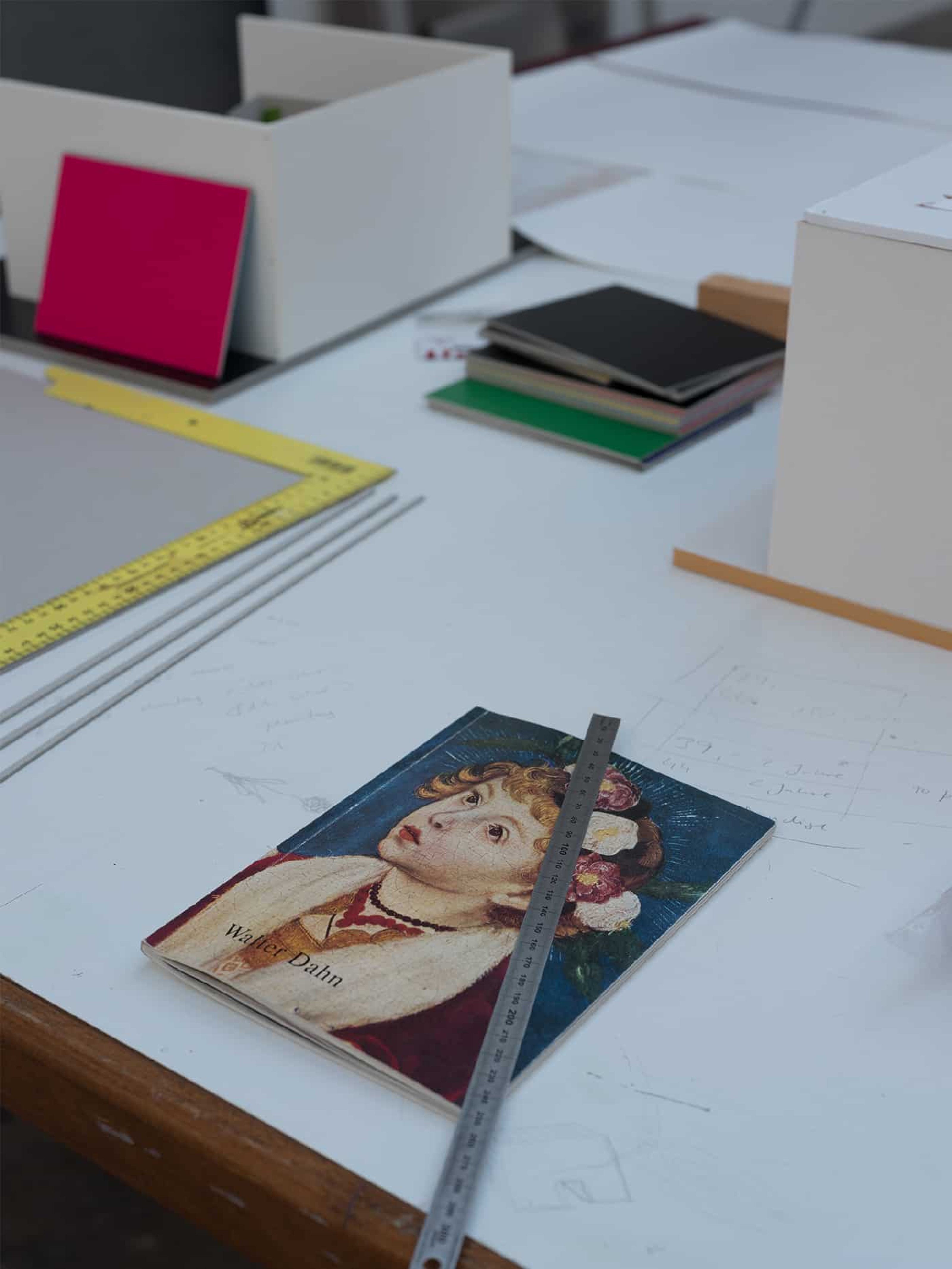
In the studio. © Albrecht Fuchs for Collecteurs
IG: I think of your visual works as texts that demand a close reading by the viewer. They are somehow presenting without representing. Is the viewer’s undisturbed attention important to you? Does it affect the way the viewer ‘touches and can be touched’ by the work?
TW: I am not interested in a general mode of reception of my works. For me, it’s more exciting to think of the visitor’s mode of reception as something I can create or work with. I am really focused on the effect the whole exhibition has on a visitor. How close can one come to the work? Do they observe or are there other actions that they are involved in? For example, the installations of Streichholzarbeiten will be part of the work as visitors strike the matches themselves. For Billboard, however, they are the observers of a man placarding a wall and can decide what seems more interesting to them. The professional choreography of placarding functions as a kind of craquelée, in which the viewers are exposed to.
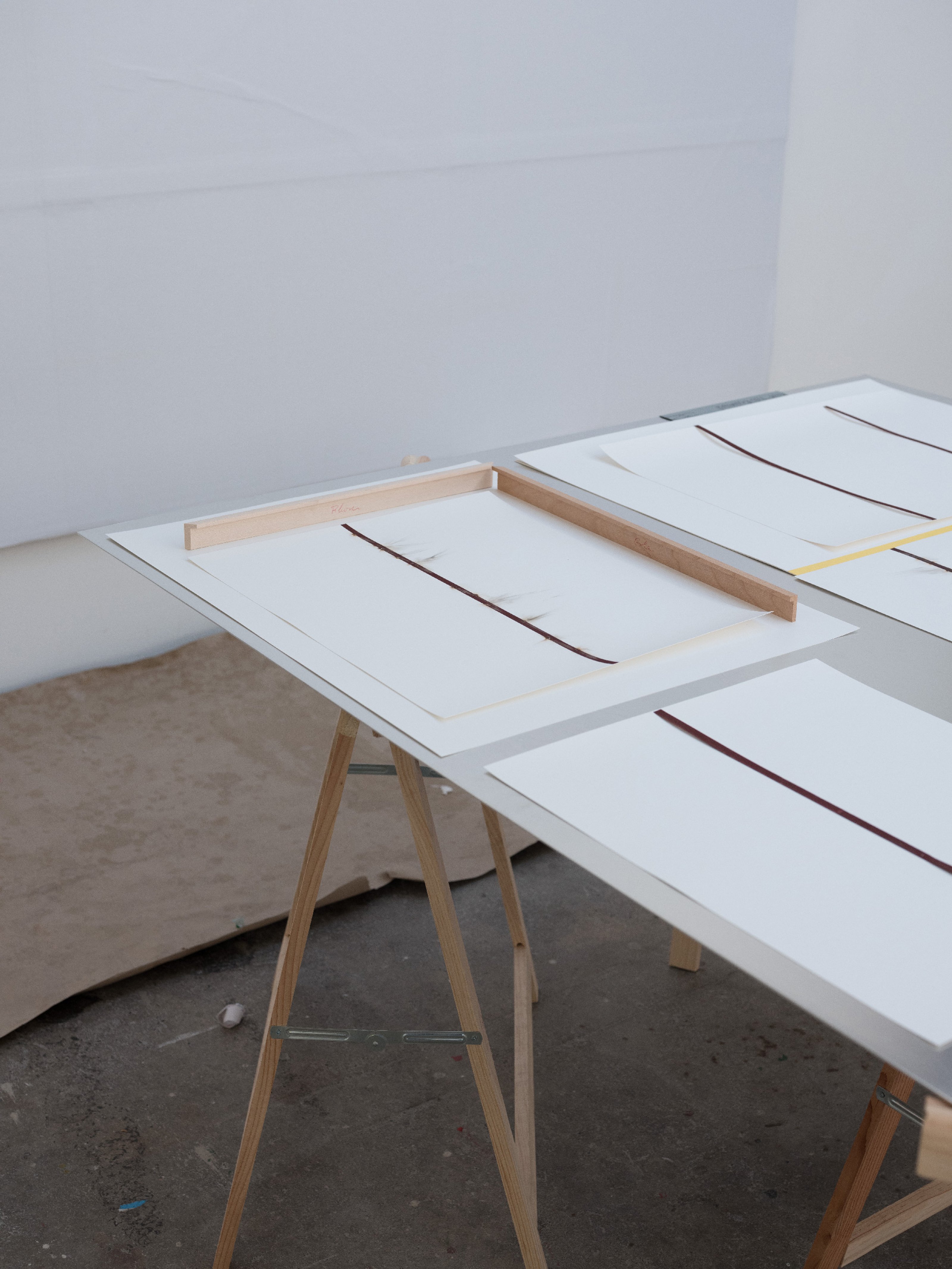
Wachholz’s Capsule Edition for Collecteurs. Photography © Albrecht Fuchs for Collecteurs
IG: Somehow you challenge the viewers’ limits by providing the freedom of choosing to become or not become part of the works. It feels like there is something at stake here; meanwhile the whole experience takes place in a very specific context, you create a space where the audience is challenged and invited to take risks. Are you interested in being the observer of their reaction, in witnessing their dilemmas? Is that breaking of the audience’s safety zone part of your artistic process?
TW: The observation of the act itself is very exciting. Maybe I should not be there as a viewer. I’ve tried hard to stay away, because I think the moment of lighting the match is rather an experience for the people who do it. As the context shifts, they experience that very change through the movement of their gesture, the poetics of the match’s trace. Right after, they can observe what happens to the whole work, their traces find themselves in relation to the traces of others. To me, an exhibition is mostly about observing, but also about the relations between work and observer. How does the installation look like every single day of the show? How does it develop? How does the audience work “together” over time, if there is a “togetherness”? Of course, every group is slightly different. Every opening has its own dynamics. Sometimes it’s more playful, sometimes more reserved. Sometimes people are eager to light as many matches as possible. I am interested in opening up the experience and everyone shall decide themselves, how and if they want to be a part of it.

Thomas Wachholz’s studio, Cologne.© Albrecht Fuchs for Collecteurs
IG: In her essay ‘On Not Knowing Ancient Greek,’ Virginia Woolf talks about the role of the chorus in Euripides’ Bacchae. She says that the words of the chorus have an intentional amphisemy through which the audience is motivated to make their own meaning and conclusions; It’s like Euripides wants to share with his readers the responsibility of his work. I feel like your practice consists of this schema; it generates this type of open space. Is that a conscious decision?
TW: I feel there is a difference between viewers interpreting a work, and viewers being somehow included in creating the work. For example, during Streichholzarbeiten I invite the audience to burn matches themselves. I am generally interested in the question of authorship in my work, knowing — of course — that I am the one who creates the conditions of the work even if I ask people to participate in it. The conditions of a work and how it can come into being is my main point here. Is it a machine that creates the work? Is it my hand? Or is it a visitor of the exhibition who is striking the match and therefore creating a trace? And how does it make a difference? Maybe I distrust the painter’s hand, therefore I distrust my hand as well.
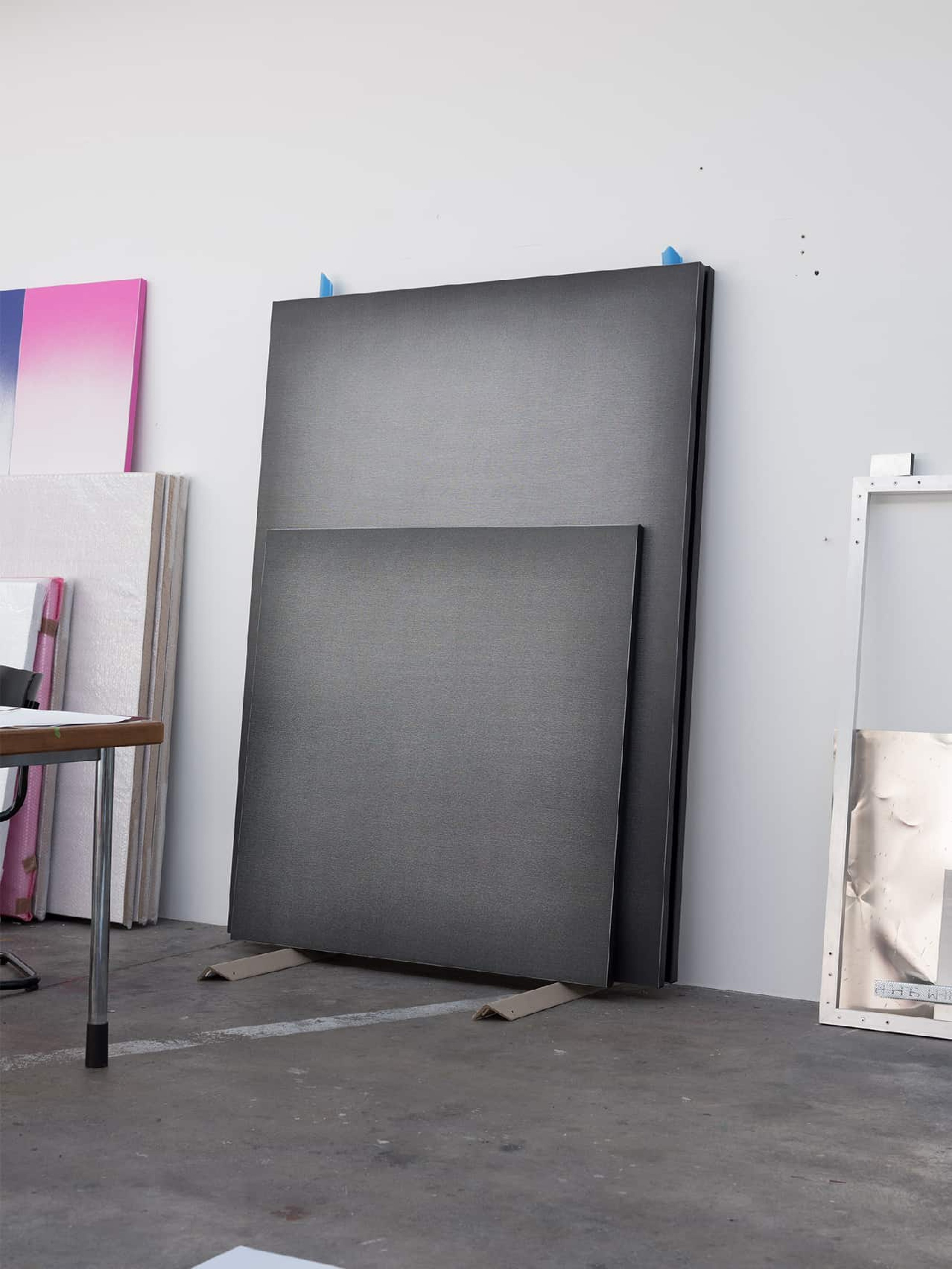
Thomas Wachholz’s studio, Cologne.© Albrecht Fuchs for Collecteurs
IG: Or maybe it is not a matter of distrust but a matter of trust, when longing to create a collective environment through theses interactions. You are leading an act, but this act will only be completed along with the viewer’s participation.
TW: It totally depends on the act of the audience, that’s true. It was really a step for me to do it the first time, to accept that you are no longer in control of what is going to happen. And I had to figure out that I don’t always feel comfortable with the way the audience acts. Sometimes the viewers are very needy for involvement and that’s not an action I can trust completely when it comes to the work itself. It’s different with every opening, regarding its location and dynamics. The framing is very important. People react differently to the works in the gallery than in the subway station; Zurich is different from LA. This work turns a bit into a social study; people are sometimes aggressive and destructive. Sometimes they are careful with the work and enjoy this experience of reacting towards each other. When they really tend to “strike gently”.
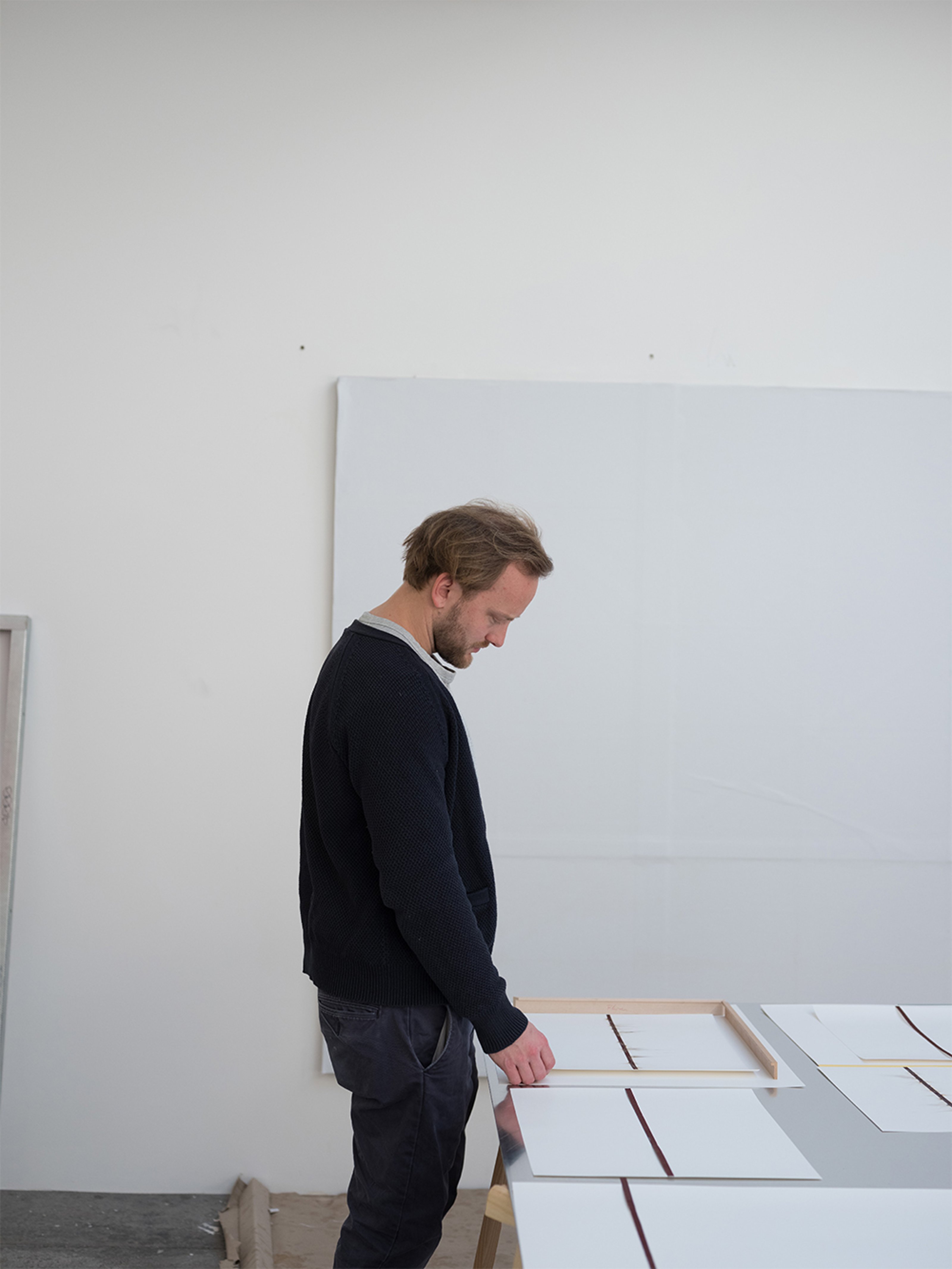
Thomas Wachholz in his studio in Cologne. © Albrecht Fuchs for Collecteurs
IG: Can you tell me a story about love?
TW: It’s possible.
IG: But you won’t do so? You can also use someone else’s words.
TW: I mean, love is possible; That’s my story, that’s what I can say about love. But if you ask me for a bit of a story, I would say that I think love is about repetition, about routine. It’s the little things that count. It’s about doing small gestures and sensitive reactions in everyday life, about opening up possibilities and about enduring. About letting go, about surrendering yourself to something, about confrontation and the tension between two poles.
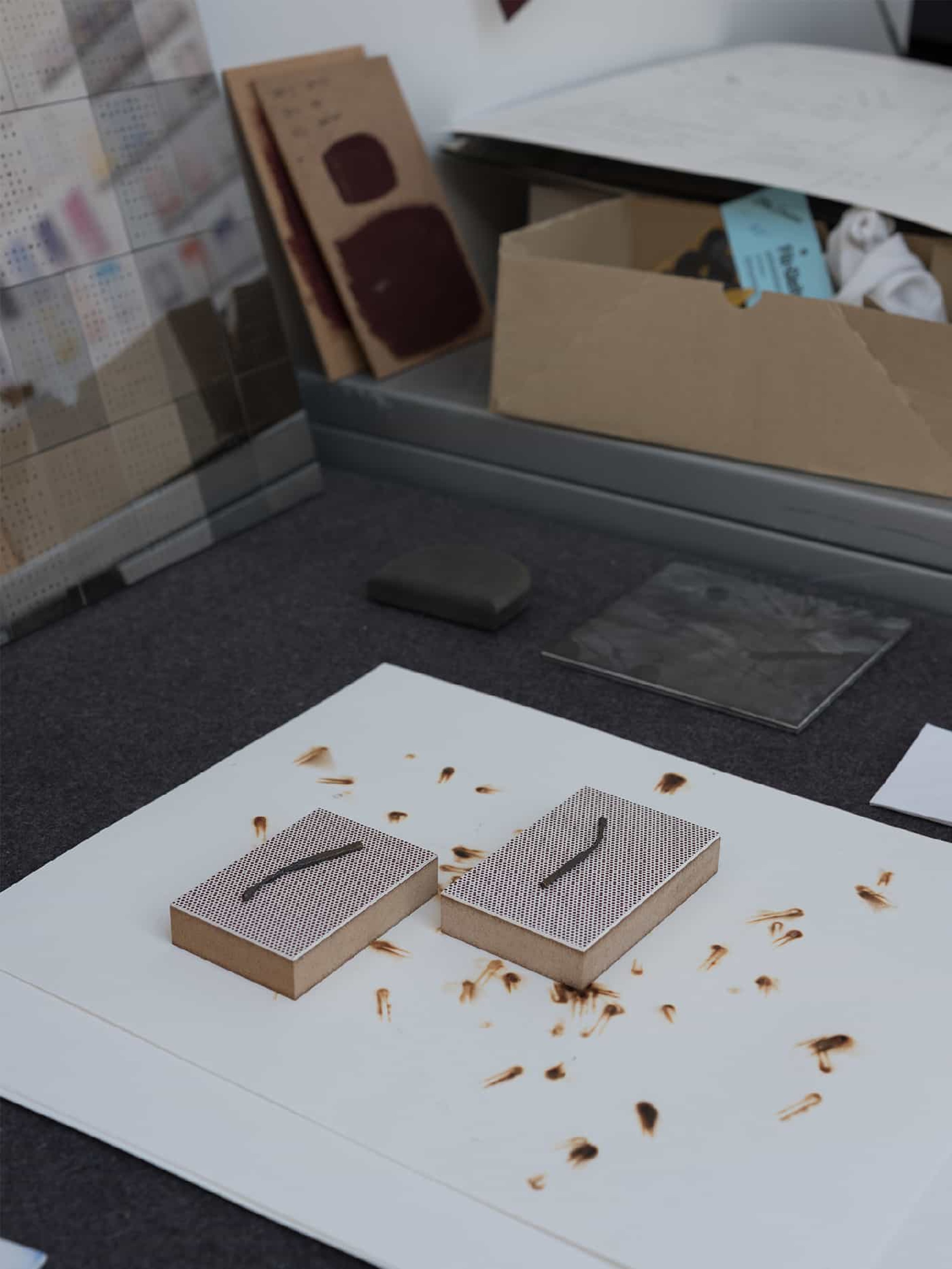
Thomas Wachholz’s studio, Cologne. © Albrecht Fuchs for Collecteurs
IG: And finally, can you tell me a bit more about what have you been working on these days, what have you been thinking about or planning?
TW: For some time, I’ve been playing with the idea of starting to work in a car wash; a very monotonous and repetitive job. You know that Germans have a kind of weakness for clean cars. Even though I am not a big fan of cars themselves, I love to see people bringing their car to the car wash regularly. It totally fits my interest for uncreative and optimized daily actions. There is an industrialized process, but for sensitive actions, the human hand is involved.
